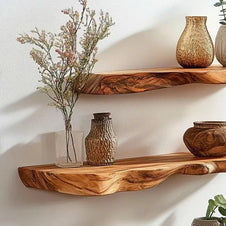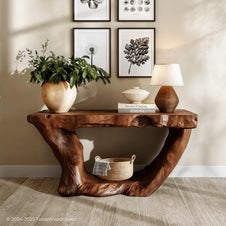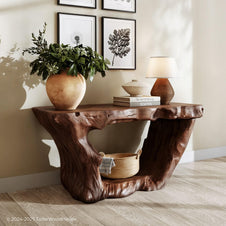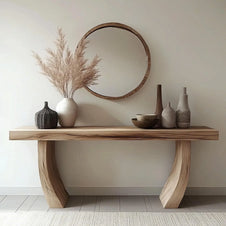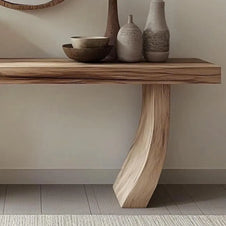Creating your own floating nightstand DIY is a smart way to save floor space while adding modern style to your bedroom. With the right tools, materials, and some creativity, you can craft a functional piece that reflects your personality. This guide walks you through every step, from planning to finishing, so your floating nightstand not only looks great but also stands the test of time.
Let’s get started and transform your bedroom with this easy, stylish project!
Why Choose a Floating Nightstand DIY?
Before we dive into the how-to, it’s worth exploring why so many people are swapping traditional bedside tables for floating designs they make themselves.
Save Floor Space and Create a Minimal Look
One of the biggest advantages of a floating nightstand DIY is the floor space it frees up. With nothing touching the ground, cleaning is easier, and your room instantly feels less cramped. This makes it an ideal choice for small bedrooms or apartments where every inch counts.
Customize Design, Size, and Finish
When you buy a nightstand from a store, you’re limited to what’s in stock. But by going DIY, you can decide the exact width, depth, color, and wood type. Whether you love a minimal white finish or rich, warm wood tones, your nightstand will perfectly match your bedroom style. If you want a larger design with more surface space, check out this Large Floating Nightstand for inspiration.

More Affordable Than Store-Bought Options
High-quality nightstands can be surprisingly expensive. Building your own not only saves money but also ensures you’re getting solid materials instead of cheap particleboard.
Once you see these benefits, the next step is to gather the tools and materials you’ll need.
Tools and Materials Needed for Floating Nightstand DIY
Before you start your floating nightstand DIY, it’s important to prepare all the tools and materials you’ll need. Having everything ready will save you time and frustration during the build.
Essential Tools
These are the must-have tools to ensure your nightstand is sturdy and well-built:
-
Drill and Drill Bits – For making pilot holes and securing screws into both the wood and the wall.
-
Circular Saw or Miter Saw – To cut your wood pieces accurately. A miter saw is ideal for clean, straight cuts.
-
Level – To make sure your nightstand is perfectly horizontal once mounted.
-
Tape Measure – For accurate dimensions before cutting.
-
Sandpaper or Electric Sander – To smooth rough edges and surfaces, ensuring a professional finish.
Pro tip: If you’re new to DIY, investing in a good quality drill and sander will make your project much easier and the result more polished.
Recommended Materials
The materials you choose will determine both the look and durability of your floating nightstand:
-
Solid Wood Boards – Oak, pine, or walnut are popular choices. Pine is budget-friendly, while walnut offers a luxurious finish.
-
Heavy-Duty Floating Shelf Brackets – These support the weight of your nightstand without visible legs. Make sure they are rated for at least 20–50 lbs.
-
Wood Screws – Choose lengths that will securely fasten your boards together without splitting the wood.
-
Wall Anchors – Essential if you’re mounting on drywall, as they prevent the screws from pulling out.
Optional Add-ons
For a more functional and stylish build, consider adding:
-
Drawer Slides – Perfect if you want hidden storage for books, chargers, or glasses.
-
LED Strip Lights – Adds a soft glow at night and makes your nightstand stand out.
-
Decorative Handles – If you add a drawer, a stylish handle can enhance the overall design.
If you want a visual guide for gathering your supplies, the DIY Floating Nightstand Guide from Jen Woodhouse has excellent step-by-step photos and additional suggestions for tool setup.
Once your tools and materials are ready, you can move confidently into the building phase knowing you have everything you need.
Step-by-Step Guide to Building a Floating Nightstand
Once you’ve gathered your tools and materials, it’s time to start the exciting part - bringing your floating nightstand DIY to life. Follow these steps for a professional-looking finish, even if you’re a beginner.
Step 1: Measure and Plan Your Design
Start by deciding exactly where your nightstand will go. Measure the wall space next to your bed, taking into account the height of your mattress so you can easily reach items when lying down.
Sketch your design on paper with accurate dimensions. This will help you visualize the finished piece and avoid mistakes later. If you’re planning to include a drawer, note the internal measurements for the drawer box as well.
Step 2: Cut and Sand the Wood Pieces
Using your circular saw or miter saw, carefully cut the wood boards according to your measurements. For a simple rectangular design, you’ll need a top panel, bottom panel, and two side panels. If you’re adding a drawer, you’ll need additional pieces for the drawer box and front.
After cutting, sand all surfaces and edges until smooth.
Step 3: Assemble the Structure
Position the side panels between the top and bottom panels, ensuring the edges are flush. If mounting on walls, drill pilot holes and install wall anchors - this prevents the wood from splitting. For extra strength, add wood glue to the joints before screwing them together.
Step 4: Install Floating Brackets
Mark the spots on your wall where the brackets will go, using your level to ensure they’re perfectly horizontal. Drill pilot holes and insert wall anchors if mounting on drywall. Attach the floating shelf brackets securely, tightening all screws.
For extra stability, try to anchor at least one bracket into a wall stud if possible. This will increase the weight capacity of your floating nightstand.
Step 5: Mount and Level Your Nightstand
With the brackets in place, slide your assembled nightstand onto them. Double-check with your level to make sure it’s perfectly horizontal before securing the structure with screws from the inside.
Stand back and look at it from different angles to confirm alignment - this small step ensures your project looks professional.
Step 6: Add Finishing Touches
Now it’s time to make your floating nightstand DIY look amazing. Choose a wood stain or paint color that matches your bedroom’s style. Apply at least two coats of stain or paint, allowing proper drying time between coats, then finish with a clear sealer for durability.
You can also add decorative handles if you’ve included a drawer, or install LED lights underneath for a modern glow. If you’re into rustic charm, take inspiration from this Floating Nightstand. For a drawer-based design, the DIY Floating Nightstand tutorial is a great resource.

Styling Ideas for Your Floating Nightstand
A nightstand isn’t just a utility - it’s part of your bedroom décor.
Minimalist Bedroom Setup
Pair your floating nightstand with a low-profile bed and neutral linens. Keep the surface clutter-free for a clean, airy feel.
Rustic and Cozy Corners
Combine natural wood tones with warm lighting and textured blankets. This works beautifully with handcrafted pieces like the Wooden Floating Nightstand.

Modern and Sleek Look
Opt for high-gloss finishes or dark stains, and accessorize with metallic lamps and minimalist décor.
While style is important, maintaining your piece is just as critical.
Maintenance Tips for a Long-Lasting Floating Nightstand
A well-made floating nightstand DIY can last for years with the right care.
-
Regular Cleaning to Maintain Finish: Dust weekly and wipe with a damp cloth. Steer clear of aggressive cleansers as they can remove the finish.
-
Protecting Against Moisture and Scratches: Use coasters for drinks and felt pads under décor items to prevent damage.
-
Re-tightening Brackets Over Time: Every few months, check the screws and brackets to ensure your nightstand is still secure.
If durability is your top priority, you might love the Floating Nightstand Bed - a design built to last.
Taking care of your nightstand means it will look as good as the day you made it.

Common Mistakes to Avoid in Floating Nightstand DIY
Even the simplest projects can go wrong if you’re not careful.
-
Skipping precise measurements – Leads to uneven mounting and a tilted surface.
-
Using low-quality brackets or screws – Risk of collapse over time.
-
Ignoring wall type before drilling – Drywall needs anchors; solid walls may need masonry bits.
-
Overloading the surface – Floating nightstands have weight limits; keep heavy items elsewhere.
Avoiding these mistakes ensures a smoother project and a safer end result.
FAQs
1. How much does it cost to build a floating nightstand DIY?
The materials you select will determine this. A basic floating nightstand DIY using pine wood can cost around $30–$50, while higher-end hardwoods may raise the price to $80–$120.
2. What tools are needed for a floating nightstand DIY?
At minimum, you’ll need a saw, drill, level, sandpaper, and screws. For a smoother finish, an electric sander and quality wood stain are recommended.
3. Can I build a floating nightstand DIY without power tools?
It's more difficult, but not impossible.. You can use pre-cut wood panels and manual screwdrivers, but power tools make the process faster and more precise.
4. How strong is a floating nightstand DIY?
When installed with heavy-duty brackets and wall anchors, a floating nightstand DIY can hold 20–50 lbs, depending on wall type and materials used.
5. Is a floating nightstand DIY beginner-friendly?
Yes! It's a fantastic first woodworking endeavor. As long as you follow measurements and use proper hardware, even beginners can get a professional-looking result.
Final Thought
Building your own floating nightstand DIY is an affordable, creative way to personalize your bedroom. It saves space, adds style, and gives you the satisfaction of making something functional with your own hands. Whether you go rustic, minimalist, or modern, the result will be a nightstand that perfectly fits your space and needs. With these tips, your floating nightstand DIY will look amazing and serve you for years.


